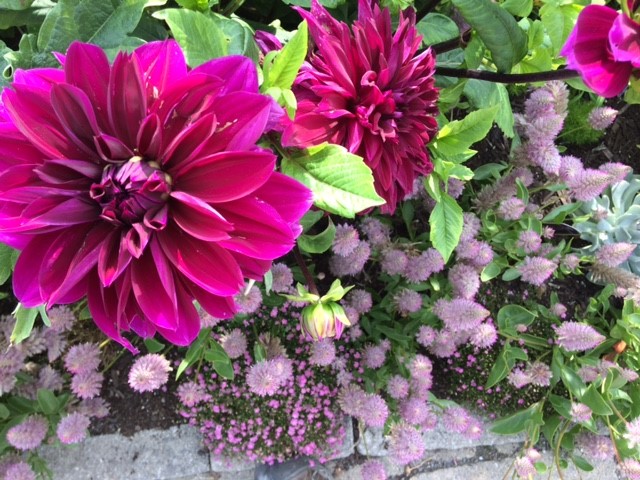High-Functioning Natives for your Spring Garden
Aquilegia canadensis, or red columbine, is a wonderful native plant that thrives in part-sun, seeding itself regularly when happy. The flowers are a perfect mix of red and yellow which support a mix of pollinators and add a unique shape to your springtime garden. Come May, you’ll have the opportunity to see the many we have naturalizing in the entrance gardens here at the Gardens.
Aronia melanocarpa, or black chokeberry, puts on a beautiful display of white flowers in the spring. They thrive in a moist sunny spot, but can handle part-shade as well as drier soil once established. I love these plants for their ability to really shine in spring, summer, and fall (with their striking foliage color). They are a great source of nectar for insects in the spring and berries for birds and other animals in the fall. There are many cultivars of black chokeberry that have a wide range of sizes that can fit just about any garden space. We have hundreds of the ‘Viking’ cultivar planted in our parking lots, with a handful of other cultivars throughout the Gardens.
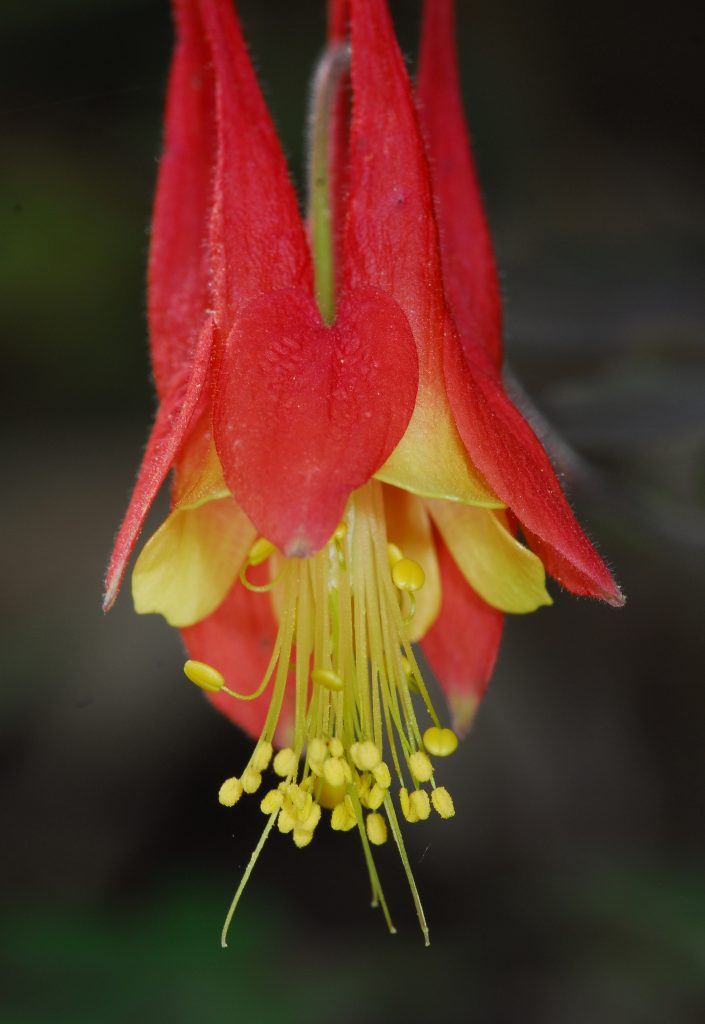
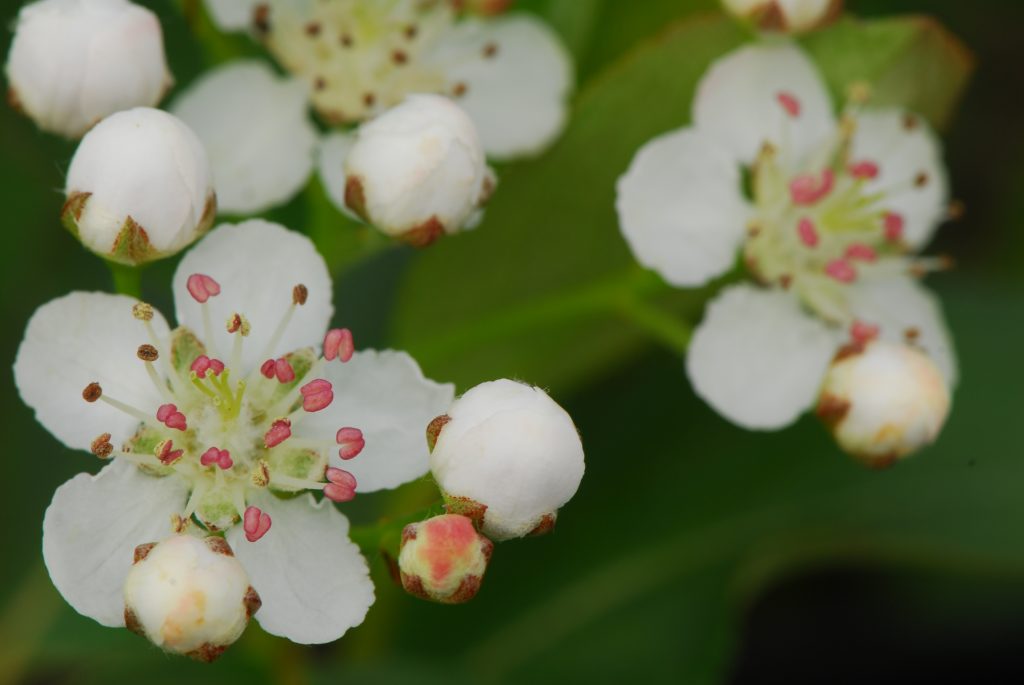
Dicentra eximia, or fern leaf bleeding heart, creates such a lush mound of airy foliage followed by beautiful heart-shaped flowers perched 6-12″ above the foliage. These flowers are loved by bees and will flower continuously throughout the summer if properly sited. They thrive in part-sun with medium moisture. We have these scattered throughout the Gardens, and they are reseeding all around, much to pollinators’ delight.
Thalictrum pubescens, or meadow rue, has columbine-like leaves and delicate, almost cloud-like flowers that add a unique texture to your sun-loving garden spaces. It is a good pollinator plant that blooms for a few weeks in late spring. This thalictrum likes medium moist but well drained soil and flowers in mid to late summer. The plant itself grows very tall around 4-7′ and the flowers are white and airy with a purple tinge. It adds a very unique structure to your garden space and looks nice in a more naturalized type setting.
Mertensia virginica, or Virginia bluebells, brings such a unique color to the springtime palette and the bees love it as well. Virginia bluebells thrive in part-shade, semi-moist soil and will reseed around when happy. They provide a nice vase-shape form with leaves that can be hues of purple and flowers start pinkish and open to blue. I mean, what’s not to love? Once the summer heat comes around, these plants do go dormant so plan accordingly with other plants to fill the space. We have lots of these between the Lerner Garden of the Five Senses and the Great Lawn.
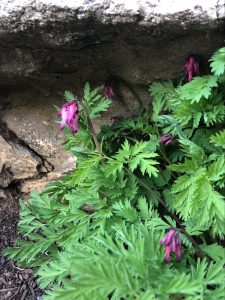
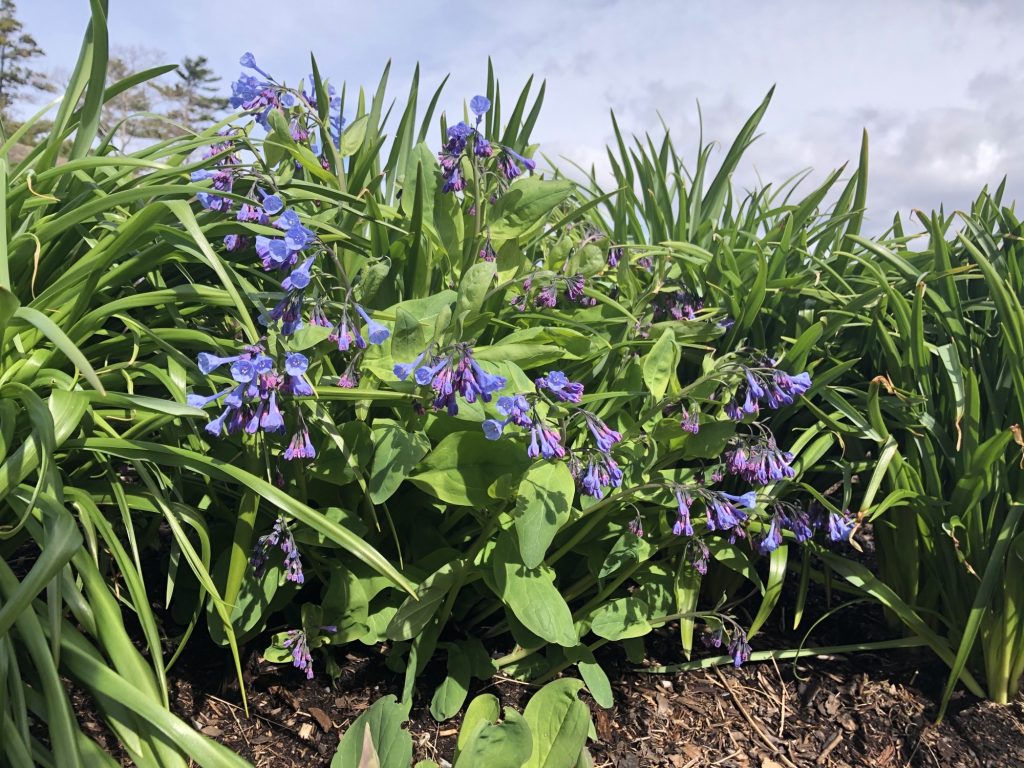
You might have to wait until May to see these plants at the Gardens, but you can start your search for your own spring natives to add to your garden space today. Bring on the spring flowers!
Brent McHale is a Horticulturist and Gardens Aglow Program Manager at the Gardens.
